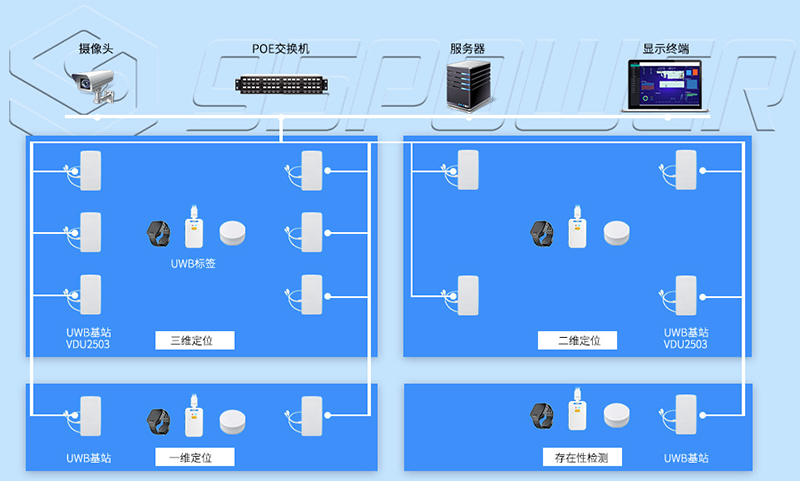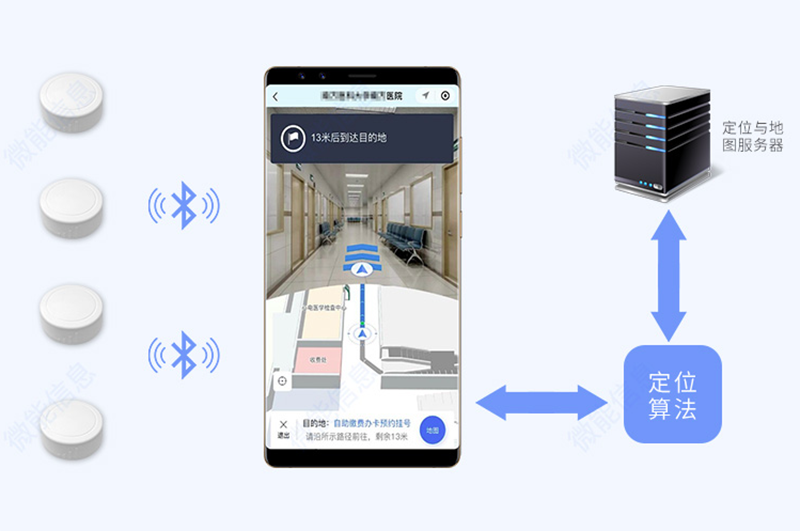Analysis of indoor and outdoor integrated positioning scheme, GNSS/UWB/BLE positioning technology
Our indoor and outdoor integrated positioning solution aims to provide users with seamless positioning services, enabling high-precision and high reliability positioning in both indoor and outdoor environments. By integrating multiple positioning technologies and combining advanced sensors and algorithms, precise positioning and tracking of personnel, items, and equipment can be achieved.
Technology selection
1. GNSS positioning (outdoor):
Global navigation satellite systems (such as GPS, Beidou, GLONASS, Galileo, etc.) provide extensive coverage and high positioning accuracy in outdoor environments. It can achieve positioning accuracy of meters or even sub meters.
Advantages: Wide coverage, suitable for various outdoor scenes; The positioning accuracy is relatively high.
Disadvantage: The signal is obstructed in indoor environments and cannot function properly.
2. UWB positioning (indoor):
Ultra wideband (UWB) technology performs well in indoor environments and can achieve centimeter level high-precision positioning. By sending nanosecond level extremely narrow pulse signals and measuring the signal's flight time, the distance can be determined.
Advantages: High precision, strong anti-interference ability, and good real-time performance.
Disadvantage: It requires the deployment of specialized base stations, which results in relatively high costs.

3. Bluetooth positioning (indoor assistance):
Bluetooth beacons can provide positioning services with a certain level of accuracy in indoor environments. Estimate distance by receiving signal strength from Bluetooth beacons.
Advantages: Low cost, easy to deploy; Can be integrated with devices such as smartphones.
Disadvantages: The positioning accuracy is relatively low, and it is greatly affected by environmental interference.

System architecture
1. Outdoor positioning module:
Receive GNSS satellite signals and perform positioning calculations.
It can be integrated into terminals such as smartphones and car navigation devices.
2. Indoor positioning module:
UWB Anchor: deployed in indoor environments, transmitting UWB signals.
UWB tag: worn on personnel or objects, receives UWB signals and sends them back to the base station for positioning calculation.
Bluetooth beacon: assists in positioning and provides approximate indoor location information.
3. Fusion algorithm:
Integrate outdoor GNSS positioning and indoor UWB/Bluetooth positioning data, and achieve seamless switching and high-precision positioning through algorithm optimization.
Dynamically adjust the weight of positioning technology according to different environments and needs to achieve the best positioning effect.
4. Data management platform:
Receive and store positioning data, provide real-time location display, trajectory playback, data analysis and other functions.
It can be integrated with other management systems to achieve applications such as personnel management, asset tracking, and security monitoring.
Application scenarios
1. Industrial sector:
Real time positioning and tracking of personnel, equipment, and materials within the factory to improve production efficiency and safety.
Realize intelligent warehouse management, quickly locate the location of goods, and improve logistics efficiency.
2. Business field:
Provide indoor navigation services to customers in shopping malls, supermarkets, and other places to enhance the shopping experience.
Manage employees in the mall to improve service quality.
3. Medical field:
Locate patients, medical staff, and medical equipment within the hospital to improve the efficiency and safety of medical services.
Realize rapid positioning and response during emergency rescue.
4. In the field of public safety:
Real time monitoring and management of personnel in large-scale events, venues, and other venues to ensure safety.
Provide accurate positioning services for emergency rescue personnel such as firefighters and police, and improve rescue efficiency.
Implementation steps
1. Clear requirements and selection
Firstly, determine the positioning object, accuracy requirements, and application scenarios, and evaluate the existing environment and equipment. Then, based on the analysis results, taking into account factors such as technological maturity, cost, and reliability, appropriate positioning technology and equipment are selected.
2. Design and Deployment
Design system architecture, including hardware device deployment and software platform development, and develop data transmission and communication protocols. Next, install and debug the equipment according to the design plan, and perform signal testing and optimization on the indoor environment to ensure positioning accuracy.
3. Integration and optimization
Integrate the positioning system with other management systems to achieve data sharing and collaborative work. Conduct overall testing and optimization to meet application requirements.
4. Training and Maintenance
Train users on how to use the system. Establish a maintenance mechanism, regularly inspect and maintain the system to ensure normal operation.
The integrated indoor and outdoor positioning solution provides users with seamless positioning services by integrating multiple positioning technologies. This solution has the advantages of high precision, high reliability, easy deployment and scalability, and is suitable for various application scenarios. With the continuous advancement of technology and the reduction of costs, indoor and outdoor integrated positioning solutions will be widely applied in more fields.
Prev:Introduction to Atomic Clock Technology, a Core Component of Satellite Navigation
Next:Navigation Enhancement Technology: The Path to Upgrading Satellite Navigation Services
Copyrights© Shenzhen Skylab Co.,LTD All Rights Reserved.

